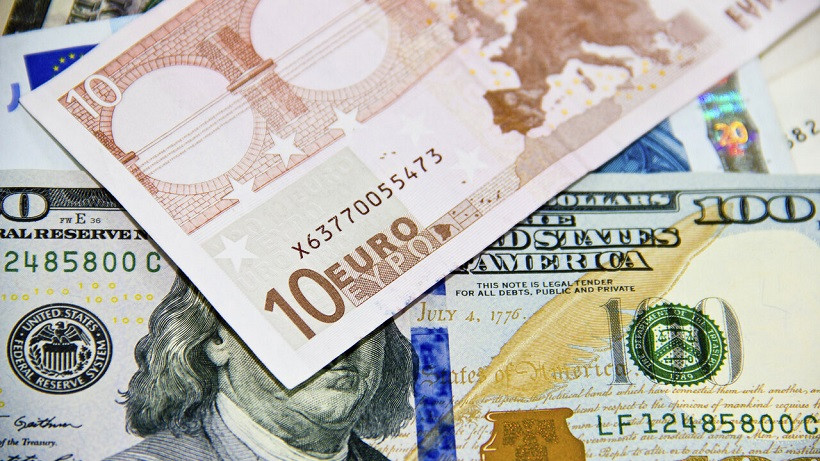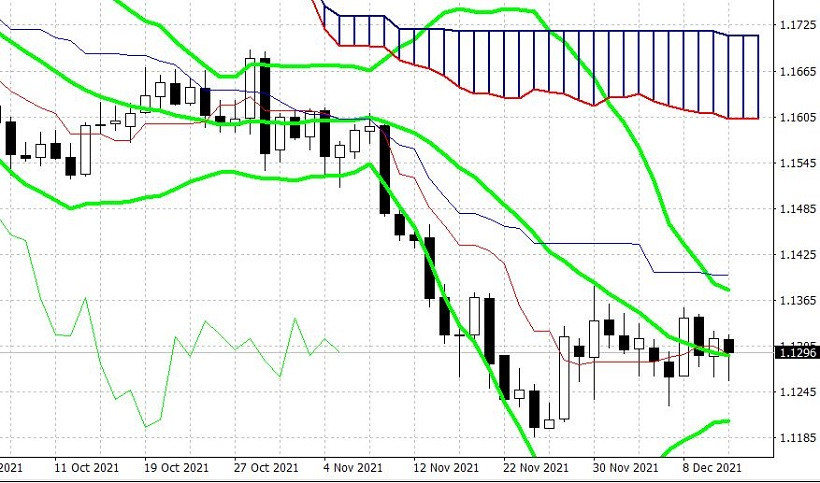
This price dynamics reflects the indecision of traders - both bulls and bears of EUR/USD. Market participants do not dare to open large positions and take profits at the first opportunity ahead of the key events of the week. We will learn the results of the December Federal Reserve meeting on Wednesday, while the verdict of the European Central Bank will be announced on Thursday. The intrigue persists on both sides, so the pair, in fact, is marking time, although it demonstrates intraday volatility.

On the one hand, it is best to maintain a wait-and-see attitude in a period of such uncertainty, observing developments outside the market. On the other hand, the pair pushes off from the boundaries of the price echelon with precision, bribing with its predictability. This pendulum has been swinging with the same momentum for several days, allowing you to accurately enter into long and short positions (and close orders with the same accuracy). The only catch is that at one point this pendulum "will not return" to its original position. The pair will either continue the downward trend, or turn 180 degrees, going on an "upward hike" of a large-scale correction. The risk of "catching the price low" is quite high, despite the overall fundamental superiority of the US currency.
Looking ahead, it should be noted that in my opinion, the pair will continue the downward trend in any case, the goal of which is the 1.1000 mark. The only question is whether traders will head down from their current positions (+ or - 50 points) or through the "upward bypass", that is, after the corrective growth to the borders of the 15th figure. The uncorrelation of the positions of the Fed and the ECB will exert background pressure on the pair in any scenario, that is, even if the Fed disappoints investors, and the ECB, on the contrary, will surprise traders with a more hawkish attitude. This is if we talk about the prospects of the coming months. But "at the moment" the reaction of traders can surprise with its unpredictability.
The fact is that dollar bulls are trapped in inflated expectations. After Fed Chairman Jerome Powell "openly" announced the acceleration of the pace of curtailing QE, this scenario ceased to be the subject of discussion. The early completion of the incentive program is almost a fait accompli, which has already been partially won back by the market. But the future prospects of the Fed's monetary policy do not look so clear. Almost all experts are inclined to believe that the Fed will have to go at least one rate increase next year. Moreover, many analysts are confident that the central bank will return to this issue twice within 2022. Powell himself remains silent on this matter, thereby causing concern. After all, back in early autumn, the head of the Fed stated that the central bank would not "automatically" raise the rate after the completion of QE (although then it was not about the early completion of the program).
Meanwhile, the latest inflation release again forced us to say that the central bank will have to stop the growth of inflation by tightening monetary policy. Friday's figures reflected another - this time a 39-year-old record. The overall consumer price index accelerated to 6.8% y/y in November. The highest value since 1982. The index also showed positive dynamics on a monthly basis, rising to 0.8% (with a slight decline forecast to 0.7%). The core consumer price index, excluding volatile food and energy prices, similarly remained at a high level. In monthly terms, an increase of up to 0.5% was recorded, in annual terms - up to 4.9% (a 30-year record).
We can say that such figures are "binding" - at least in the context of the response from the representatives of the Fed. If the US central bank confines itself to an early curtailment of QE, keeping silent about the prospects of a rate hike, the dollar will be under significant pressure. Moreover, the greenback will also give up its positions if the Fed allows monetary policy tightening in a rather "vague" form – with many "buts" and "ifs".

And nevertheless, the dollar will retain its advantage against the euro in any case. According to unofficial press reports, the ECB will react rather mildly to the record growth of inflation in the eurozone. The central bank will only stipulate the limits of the increase in the APP program in terms of time and volume (after the completion of PEPP in March). The issue of raising the interest rate is not even raised by the hawks of the ECB: it will not be considered until 2023.
Taking into account such an ambiguous fundamental background, it can be assumed that the pair will continue to trade within the 1.1260-1.1360 range before the announcement of the results of the December Fed meeting. As for the future prospects for the pair, they are rather vague - everything will depend on the degree of "aggressiveness" of the Fed and the degree of "softness" of the ECB.